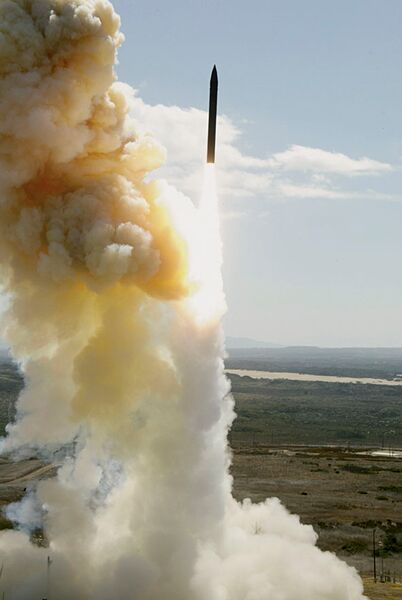
The Ground-Based Interceptor was launched from Vandenberg Air Force Base in California to simulate a combat launch from Fort Greely in Alaska. (Missile Defense Agency)
The Next Generation Interceptor (NGI) competition has come to an end as Lockheed Martin was selected as the prime to continue development of the weapon through critical design review (CDR), all-up round qualification, integration with the Ground-Based Midcourse Defense (GMD) system, and flight testing, the US Missile Defense Agency (MDA) announced on 15 April.
While no dollar amount was attached to initial statements on the contract, the Pentagon's Cost Assessment and Program Evaluation (CAPE) said in a 2021 report that it expected NGI to accrue roughly USD17.7 billion in contract costs. The downselect for Lockheed Martin will lead to a follow-on production and emplacement contract to support initial operational capability for NGI by the fourth quarter of fiscal year (FY) 2028, according to the announcement.
The MDA cited “technical maturity”, “technical rigor” in the design process, and contract-provided performance date as key factors that supported its decision.
Lieutenant General Heath Collins, director of the MDA, called the decision “very difficult” in a statement but said the agency was “confident”.
“The first level of capability for [NGI] is a step change, generational increase in capability and flexibility and agility,” he told the audience at the National Defense Industrial Association's Missile Defense conference on 16 April.
NGI is replacing the Ground-Based Interceptor (GBI), which is going through upgrades to try to keep it “relevant” and “reliable” until NGI comes online in four years, Lt Gen Collins noted.
To read more about GMD, please see US MDA performs first intercept test with selected stage booster upgrade.
Looking to read the full article?
Gain unlimited access to Janes news and more...







